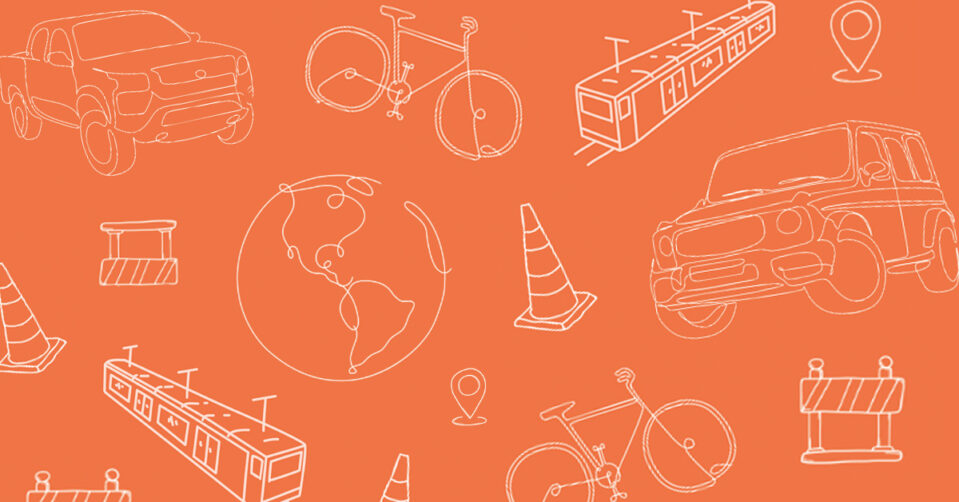Take the Next Exit: Getting to Decarbonized, Equitable Transportation
Rachel Ramirez-Guest (Staff Attorney II) / October 13, 2022

Electric vehicles (EVs) are going from zero to sixty, as this Department of Energy report on EV infrastructure trends shows. This increased interest is spurred by changing consumer preferences, recent state policies (such as zero-emission vehicle mandates for sales in California and zero-emission vehicle mandates in New York), and federal legislation (such as the 2021 Infrastructure Law and 2022 Inflation Reduction Act (IRA)). With EV investment accelerating, it is time to consider what a just transition to a decarbonized transportation sector looks like.
As with the energy sector, there are fears that this shift could negatively affect workers, and calls to ensure that EV and clean energy jobs are good jobs. United Autoworkers members recently explained that they are “concerned that automakers will take advantage of the EV transition to de-unionize auto manufacturing and drive down workplace standards.”
There are some options to address this. For example, Illinois Attorney General Kwame Raoul recently recovered over $700,000 in unpaid wages for workers hired by subcontractors to build an EV production line at a Rivian Automotive Inc. plant. An Economic Policy Institute report proposes that any taxpayer subsidies for EVs should “come attached with specific requirements on labor standards in the industry, and with measures to boost” domestic production. The IRA includes several EV tax incentives that could provide labor safeguards by incentivizing businesses to pay workers prevailing wages, utilize apprenticeship programs, and source materials domestically.
The race to decarbonize transportation raises other equity concerns too. A century-long-experiment with personal vehicles has exposed some real downsides to car-reliant transportation planning, including accessibility and affordability, public health impacts of highway projects and traffic, and public safety. Regan Patterson, former Transportation Equity Research Fellow at the Congressional Black Caucus Foundation, discusses these drawbacks in a recent podcast, explaining how transportation infrastructure exacerbates racial health, safety, and economic disparities. A Greenlining Institute report elaborates on these concerns, noting how climate change deepens inequity caused by transportation planning.
The Greenlining report identifies some solutions, including shifting investment from highways and personal vehicles to mass transit and other mobility solutions that offer multiple benefits (e.g., “health, economic and housing security, displacement prevention, access to clean technology and people’s ability to live where they work”). Patterson also suggests we can reduce these harms by embracing mass transit, micromobility (such as electric bikes and scooters), vehicle shares, and other alternatives to the personal car. She points to some examples: Michigan plans to replace Detroit’s I-375 with a tree lined, bike accessible boulevard; San Francisco replaced a highway with the Embarcadero walkway. The National Caucus of Environmental Legislators also argues that states can reimagine the transportation sector by “prioritizing active transportation, public transit, and transit-oriented development” and highlights several 2022 state laws aimed at doing so.
Scaling up EVs also requires significant resource extraction. EVs require six times more minerals to manufacture than internal combustion engine vehicles. One study found that expanding domestic mineral mining threatens culturally important areas over which Indigenous communities lack control. There are global implications as well, as the mining of materials needed for EVs has been linked to environmental injustices in the global south. A study of the equity impacts of EVs found distributional injustice throughout the EV lifecycle and recommended governments regulate to improve battery recycling processes and grid reliance/affordability, and consider the appropriate mix of EVs and transportation alternatives. Delving into these concerns, a recent Atlantic article finds that with robust battery recycling, a closed loop for materials is possible, but this will take time.
Every tool in the climate tool box is important, and there is ample evidence to suggest EVs are an effective one. Equitably addressing the impacts on the transportation sector will require critical thinking. But there are plenty of options for building a fair, and exciting, mix of transportation solutions.
The author would like to thank Terri Gerstein, Director of the State and Local Enforcement Project at the Harvard Law School Labor and Worklife Program, for her valuable feedback on this piece.
This page was updated on April 2, 2024 to better meet our accessibility standards. To see the page as it was initially published, click here.
